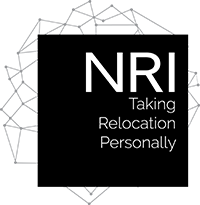It’s true that lump sum relocation benefits include reduced administrative burdens, greater cost control, fewer exceptions, and more employee flexibility than variable benefits. And, in some circumstances, a lump sum relocation allowance is a valuable tool for your HR Department.
If your company adopts a lump sum relocation allowance as a practice, there are issues you should consider before doing so. HR Managers, in particular, should ensure their corporate relocation program keeps their company competitive. Policies should meet the varying needs of different levels of employees while containing excessive costs.
What is a Lump Sum Relocation Package?
A lump sum relocation package is a one-time payment from an employer to an employee who is relocating for work. This lump sum of money is intended to cover the employee’s relocation expenses, such as moving, real estate, and transportation costs.
This type of corporate relocation package gives the employee complete control over the services and vendors they select for their move. However, it also means the employee and their family are completely responsible for managing the relocation process and staying within the lump sum budget.
What is the Average Lump Sum Relocation Package?
A lump sum relocation package is a fixed amount of money that is usually determined by the employee’s seniority, move distance, or cost of living. A company will have a policy in place to calculate a lump sum relocation allowance amount.
The average lump sum relocation package amount varies greatly by company size, location, the relocating employee, and from year to year. However, Atlas’s Corporate Relocation Survey shows that about half of companies offer lump sum relocation packages of $10,000 or more.
Which Relocation Expenses Should a Lump Sum Package Cover?
Since a lump sum relocation package is a fixed payment, technically, an employee can use it for any relocation expenses. However, companies should structure their lump sum allowances to cover:
- Moving or storing the employee’s household goods, vehicles, and pets.
- Transportation for the employee’s family to the destination. This includes airfare, gas, hotel, and other travel expenses.
- Real estate expenses, including closing costs, commissions, inspections, and other related fees.
- Temporary housing prior to moving into the employee’s new home.
- Taxes associated with the lump sum allowance. This is usually in the form of a gross-up.
- Other relocation expenses include preparing a home to list, cleaning, utilities, culture and language training, and more.
What are the Benefits of a Lump Sum Relocation Package vs. Reimbursement?
The three most common reasons why companies consider using full or partial lump sum relocation packages are containing expenses, employee flexibility, and reducing administrative burdens.
Relocation Expense Containment
Since a lump sum allowance is a fixed amount, the company knows exactly how much it will cost. This is very helpful when an organization is budgeting relocation expenses.
The most common expenses covered by lump-sum payments fall into the miscellaneous expense allowance (MEA) category. This category covers expenses not specifically addressed in the company’s relocation policy. Miscellaneous expenses may include events such as the cost of breaking a lease or preparing the old home for sale.
Miscellaneous expenses can vary wildly, so it’s easy to see how a lump-sum payment would seem like an attractive option for cost control.
Relocation Benefit Flexibility
Lump-sum payments have an obviously useful role when flexibility is desired. An employer cannot (obviously) foresee every possible need for each and every individual employee.
A lump-sum payment relieves the HR department of deciding if an expense qualifies for reimbursement under the company’s relocation policy. A lump sum allowance also gives the employee the discretion to make the decision about how to allocate their relocation expenses.
Ease of Relocation Administration
A majority of employers use a tiered approach for the types of lump-sum benefits offered. These policies use caps for the total for each type of benefit and the total amount offered. Tiers are typically structured around the level of the employee within the organization. For example, companies differentiate between a new hire or a hire fresh out of college and executives in leadership positions.
Set tiers mean lump sum relocation payments can be made with minimal administrative work. However, it is precisely this “one-size-fits-all” approach that, while it makes lump-sum payments seem desirable, may also work against the long-term relocation goals of the employer.

What are the Drawbacks of a Lump Sum Allowance?
The complexity of lump-sum payments is revealed when you begin to consider how that payment may be perceived. Before your company adopts a straight lump-sum approach to relocation, consider whether such an approach is a good match for your company.
Value of Benefits In Attracting Candidates
Consider how your company perceives itself and how it wants to be perceived. Does your company pride itself on its commitment to employees? Does it perceive itself as “caring,” “welcoming,” or “a family?”
Now consider the employee experience with a lump-sum payment. This type of relocation is, essentially, a “you are on your own” type of relocation. If the employee is left to manage the move on their own, it can create a negative impression of the company and its management style. When an employee encounters challenges with their relocation and is not given the resources to solve them, it does not demonstrate that their new company is invested in the well-being of its employees.
Conversely, a full-service corporate relocation package can make a company more attractive in attracting top talent who may be considering other job offers. Offering financial assistance and resources demonstrates a company’s commitment to its employees and their values. A “soft” benefit of managed corporate relocation is the positive impact on a company’s recruiting efforts.
Negative Impact on Employee Productivity
The immediate, hard costs for lump sum programs can be easily discovered by gathering and analyzing data.
The unknown costs of lost revenue, lower employee productivity, and marketplace reputation in the industry that can result from lump sum programs are harder to quantify.
Moving is a major life event that requires significant attention and effort from the employee. Employees receiving a lump sum relocation allowance may need to spend significant time coordinating the move, housing transactions, and adjusting their family to a new location. These tasks can distract them from their work responsibilities and reduce their productivity.
Obstacles in a self-managed, lump-sum relocation move may even delay an employee’s start date or create undue stress and frustration with the relocation being requested by the employer.
Lump Sum Relocation Package Taxes
While a lump sum relocation package may seem like an attractive option, there are some tax implications to consider.
The lump sum relocation package is considered taxable. Therefore, the employee must pay income tax on the entire amount received. In some cases, the lump sum could even push an employee’s income into a higher tax bracket, making it even more costly for the employee.
It is common practice to gross up a lump sum relocation package. This is an additional payment made by the employer to cover the employee’s tax liability on the relocation allowance. However, that makes relocation costs even more expensive for the employer.
Managed corporate relocation reduces the tax expense for both the employee and employer. Since the employee receives services instead of additional income, they will not owe additional taxes. Meanwhile, employers can pay for and write off the relocation services, saving them the expense of a gross-up payment.
Alternatives to Lump Sum Relocation Packages
Relocation Reimbursement vs. Lump Sum Relocation
Relocation reimbursement is when an employee manages a work-related move themselves, then submits the relocation receipts to the employer for reimbursement.
The benefit of a relocation reimbursement vs. a lump sum relocation package is that the employee can customize the relocation expenses to their move distance or specialized needs. Sometimes, the reimbursement total could cost less for the employer than a standard lump sum.
However, relocation reimbursement makes budgeting unpredictable for the employer. An employee’s relocation expenses could quickly balloon. Unclear expectations for acceptable relocation expenses can also cause a lot of uncertainty for employees.
In addition, the same tax expenses, negative productivity impacts, and the employee’s burden to manage the move still apply to a corporate relocation reimbursement option.
Managed Corporate Relocation vs. Lump Sum Relocation
A managed corporate relocation is when an employer hires a professional corporate relocation company to coordinate all the relocation services and expenses for the employee. The corporate relocation provider also works with the employer to design managed corporate relocation packages and manage expenses.
Managed corporate relocation packages circumvent many of the drawbacks of a lump sum relocation. It avoids additional tax and gross-up expenses, allows the employee to focus on their new role, and is a significant employee benefit that attracts top talent. In addition, managed corporate relocation can include a wider range of services, such as finding housing and schools, immigration, and cultural education.
Should Your Organization Offer Lump Sum Relocation Packages?
Corporate relocation programs must balance meeting recruitment goals, supporting relocating employees, and managing costs. To ensure that the decisions are right for your company, those decisions should be made with a full understanding of the possible scenarios involved. Analyze the benefits and potential costs to your company.
Lump sum relocations may be attractive for administrative and budgeting ease. This relocation corporate relocation package might be a good solution for new hires. Organizations that infrequently need to relocate employees may also consider a lump sum policy.
However, there are many real and soft costs to this relocation option. Even small and medium-sized companies should consider partnering with a corporate relocation service provider. Managed relocation services provide long-term cost, growth, recruiting, and cultural benefits.
Could outsourcing corporate relocation services benefit your company?
If you are ready to explore managed corporate relocation, we welcome the opportunity to evaluate your needs. Start by requesting a corporate relocation proposal.


